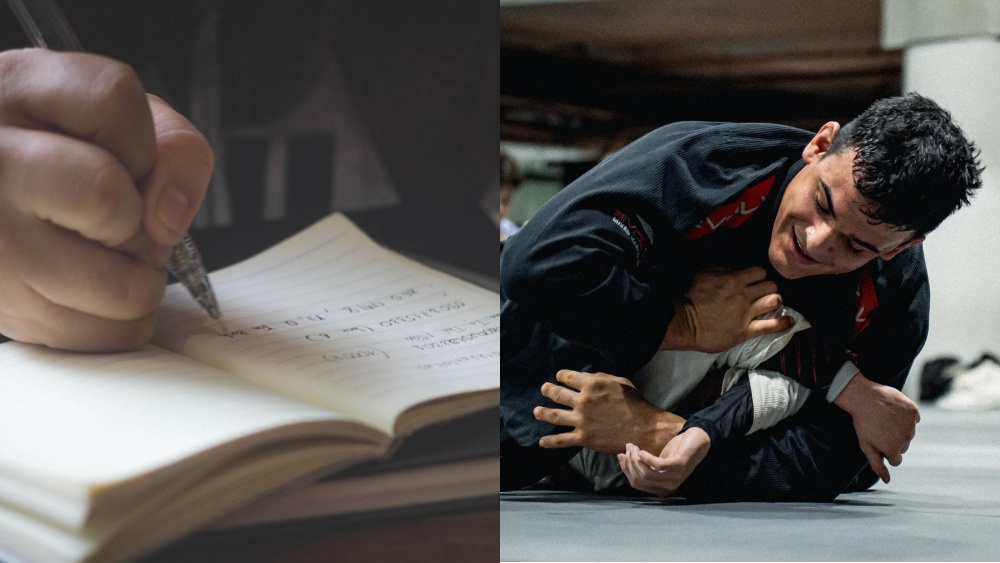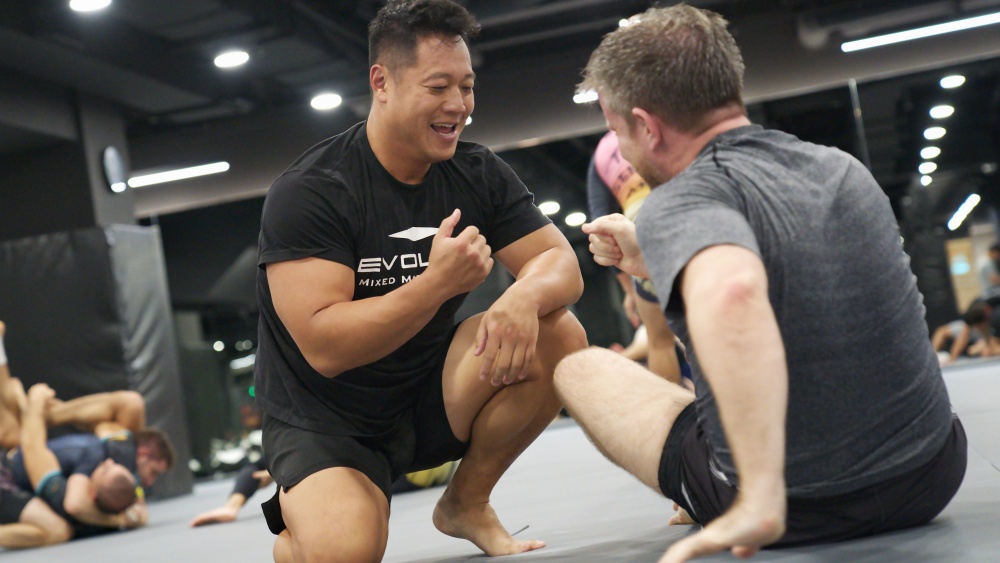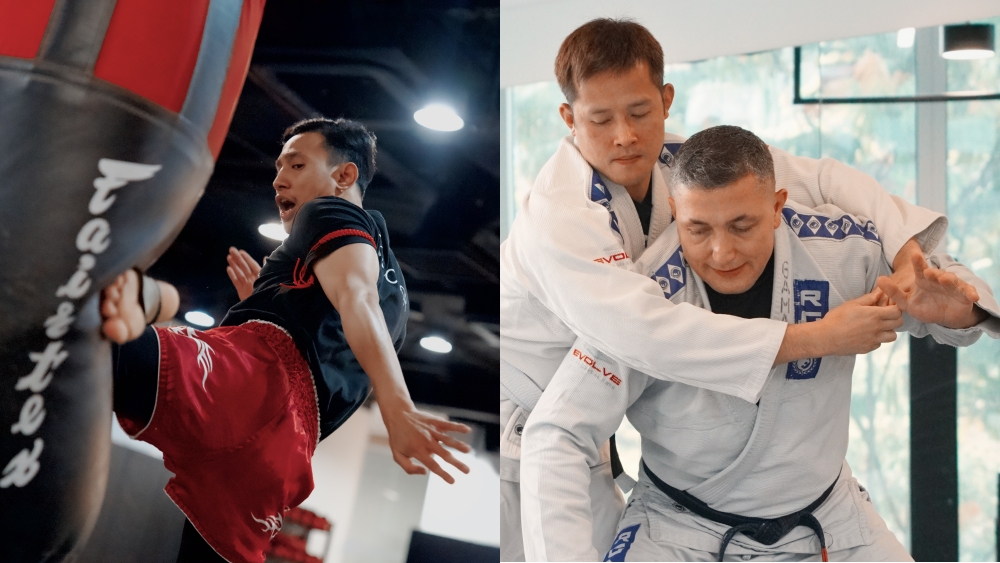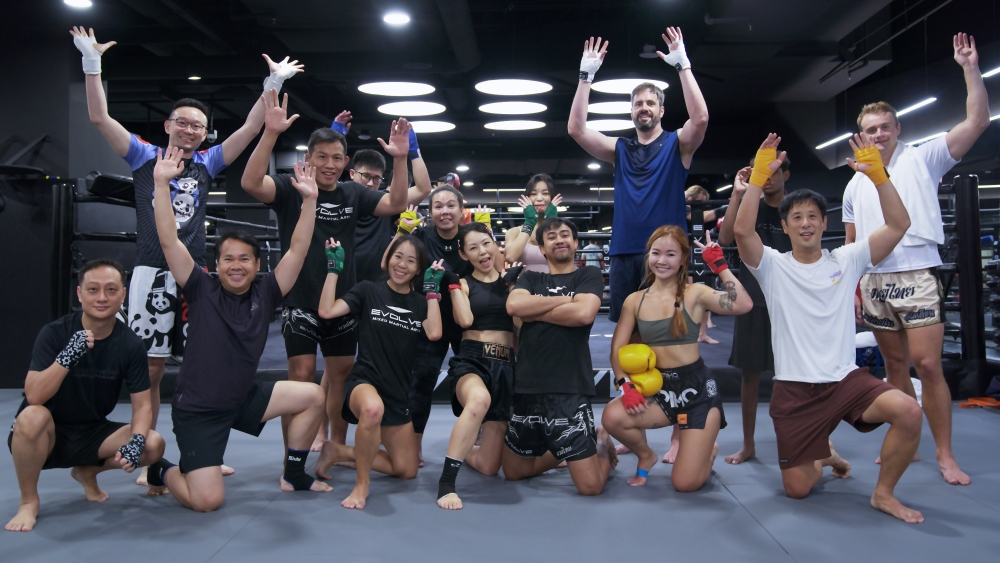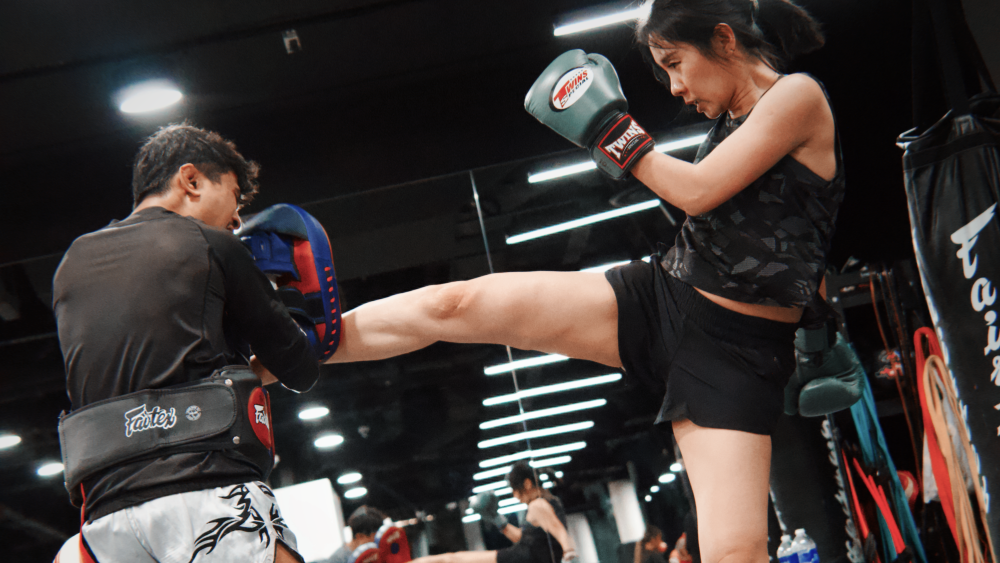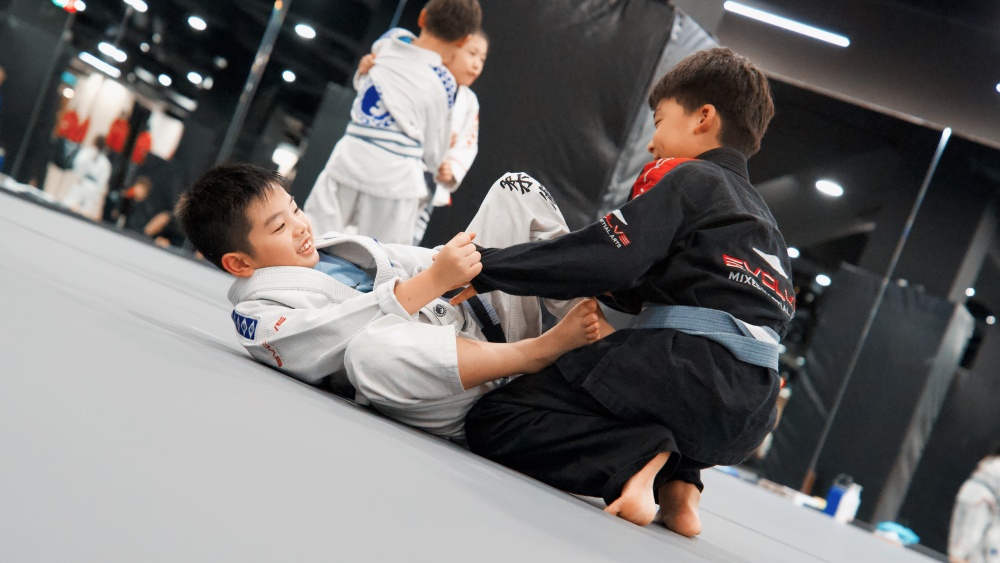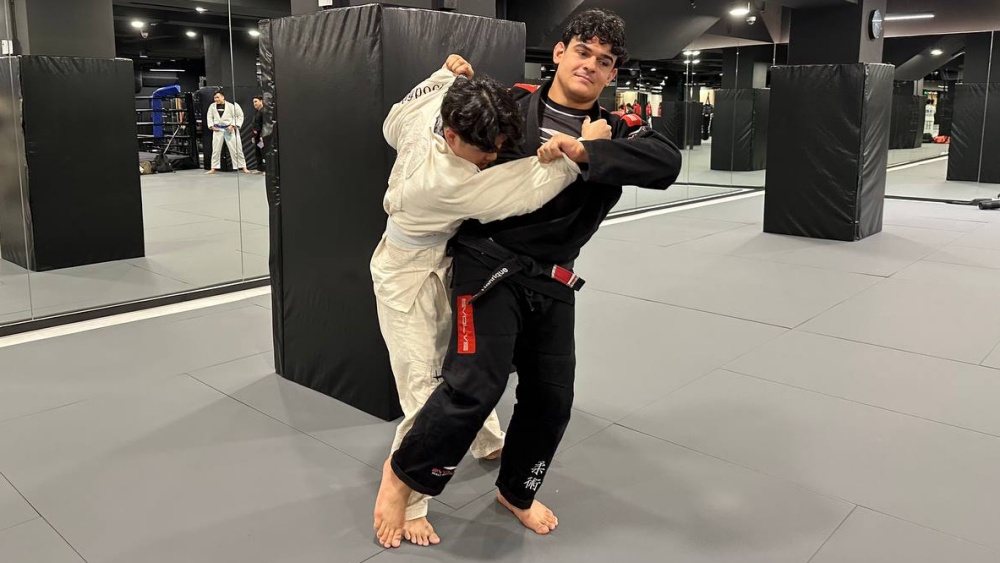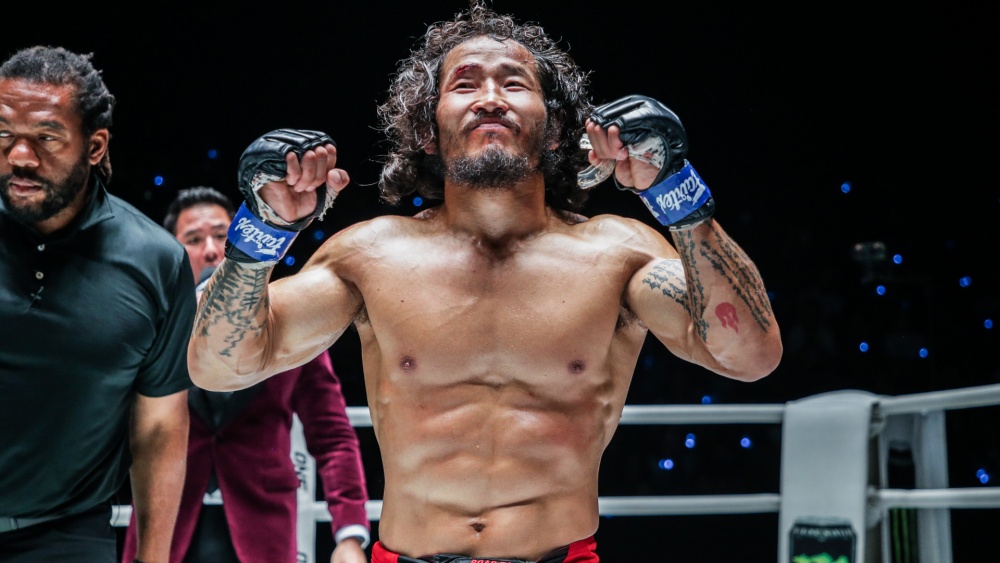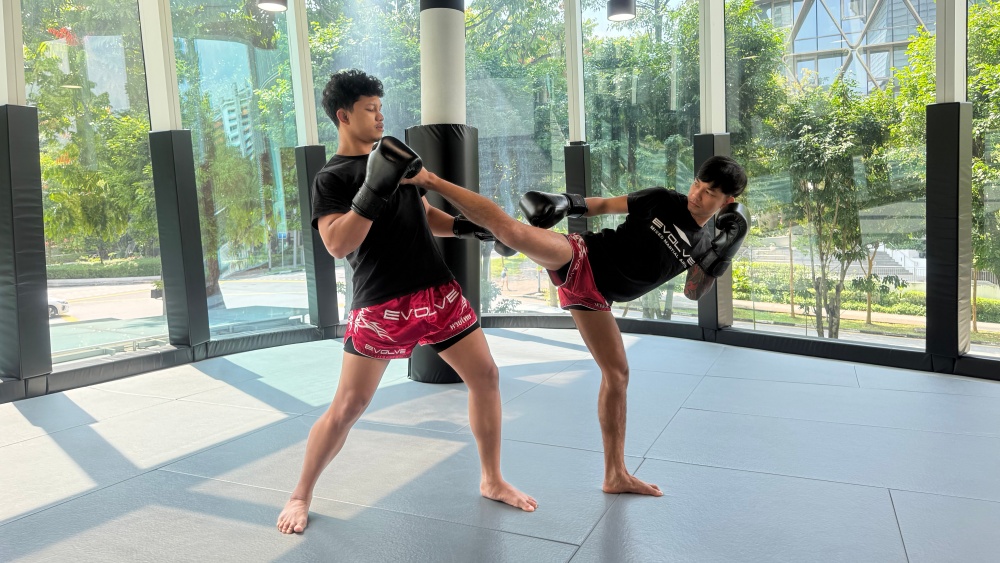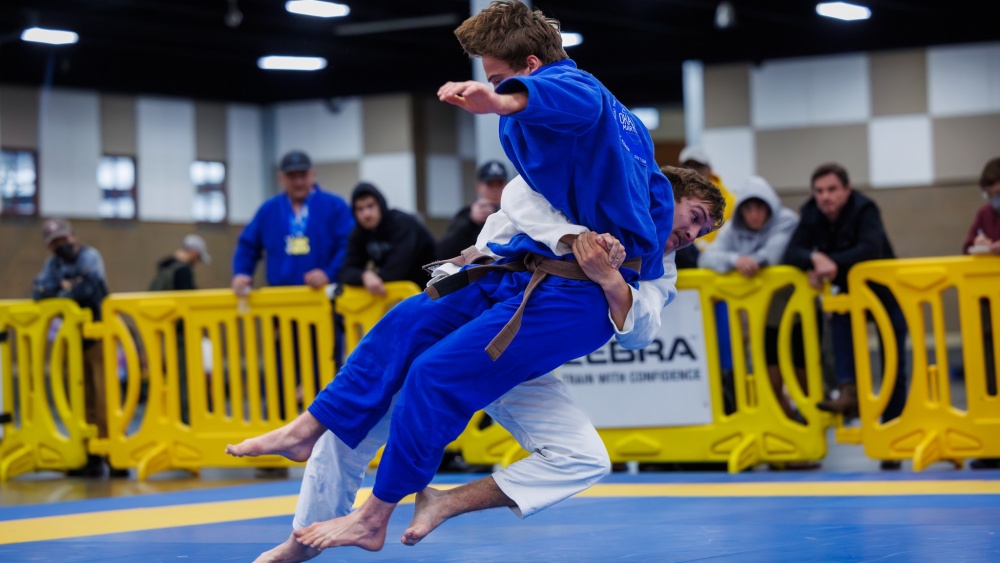It doesn’t sound like much, but journaling your martial arts journey helps you to reach your full potential.
Dedicating yourself to martial arts often means learning several techniques weekly, drilling everything you’ve learned, and sparring with training partners. It’s challenging to keep up with everything. It’s easy to forget things when you’re constantly learning new techniques and working yourself to exhaustion.
Training journals are one of the training tools elite martial artists like Jon “Bones” Jones credit for their mastery. It empowers you to take control of your growth as you write your experiences at the dojo.
Why Journaling Isn’t Just For Poets (Or Overachievers)
A training journal isn’t about writing Shakespearean sonnets about your experiences as a martial artist. It’s a practical tool that helps you to remember, reflect on, and refine the techniques your instructors teach you.
Studies show that writing down goals and progress makes you more likely to achieve them. A journal helps you to spot patterns, celebrate wins, and troubleshoot your struggles before they start holding your growth back.
The purpose of a training journal is to track the drills, exercises, and techniques your instructors explain in class and process your thoughts on your journey. Notice you feel terrific after performing a specific set of warmups during class? Write it down before you forget how good it made you feel.
Your training journey will paint a clear picture of your strengths and weaknesses. You can use it to strategize how to address weaknesses and make your strengths a more significant part of your fighting style.
How To Start A Martial Arts Training Journal: No Fancy Pens Required
Thinking about journaling your experiences at the dojo? Here’s how to get started:
- Pick Your Medium: Notebooks, note apps, or platforms like Google Docs are excellent ways to track your progress at the dojo. Each has its pros and cons, so it comes down to what works best for you.
- Create A Routine: Spend five to ten minutes journalling the most important things that happened during class. Start with the basics, like the techniques you learned, the various steps involved when executing them, what you did well when sparring, and what you struggled with. Also, write down any tips your instructor gave you when drilling techniques or sparring.
Track Your Progress Like A Scientist
Some of the main things to log in when tracking your training include:
1) Techniques And Drills
Try to be as detailed as possible when writing down the techniques and drills you learned during class. Your notes should be detailed enough for a third party to learn from them. Include details about any challenges you had performing the technique or if you think you’ve found a new favorite move.
The more detailed your notes are, the easier it will be to refine techniques by reviewing them. Instead of writing something like “practiced boxing combinations today,” write down something more precise like “Drilled the jab–cross–hook–roll under combo today. The timing felt off on the roll—I kept getting tagged by my training partner.”
Being detailed makes it easier to recognize patterns in your training. If you have several notes about struggling to roll under punches, it’s probably time to dedicate a portion of a training session to improving your mechanics when you duck under.
2) Wins And Learning Moments
Some training sessions are more productive than others, so it’s vital to celebrate your small victories. You finally made someone with a higher belt rank than you tap out? That’s worth a small celebration in your journal. Write down the things you believe led to a different outcome.
Performed a technique for the first time while sparring? Give yourself a pat on the back, and write down how you did it.
3) Goals: Short-Term vs. Long-Term
Writing down your goals is a significant part of journaling your martial arts journey. Use the SMART approach by setting specific, measurable, achievable, relevant, and time-bound goals. You should have an even balance of long and short-term goals. Review your goals every month and adjust them as needed.
Building Resilience: When The Mat Bites Back
Keeping a martial arts journal helps to make you more resilient by spotting emotional patterns and reframing setbacks. For example, if you notice fatigue takes away from your focus during sparring sessions, write it down and take steps to fix the problem, like consuming more carbohydrates before training.
Instead of sulking after getting tapped out more times than you can count during training, write it down and outline the changes you’ll make to improve. Writing about failures helps you to detach emotionally and problem-solve objectively.
For example, after a rough BJJ class, you can write down something like this: “Got stuck in side control again. Focus on framing earlier, establishing underhooks, and shrimping like my life depends on next time or sliding to take their back.”
The Growth Mindset: Because Bruce Lee Said So
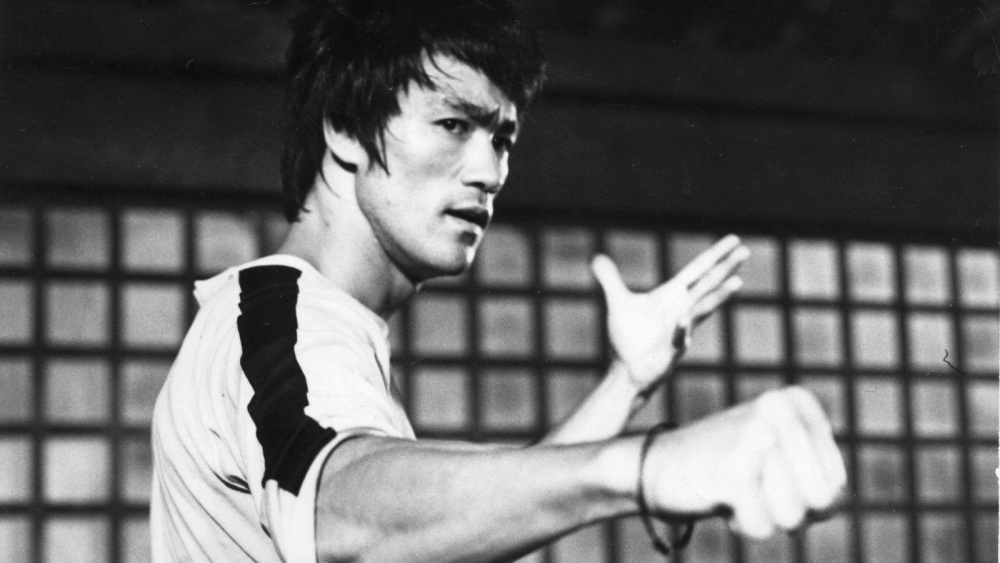
Bruce Lee famously said, “Absorb what is useful, discard what is not.” Your training journal helps you to figure out what’s useful.
You train your brain to focus on progress, not perfection, every time you write. Nailed a sweep during class? Now you have proof you’re improving.
Tips To Keep Your Journal Alive
- Add Visuals: Stick photos of your favorite martial artists or techniques on the first few pages of your journal for motivation. Add a photo of yourself during your first week of training and every few months after to track the impact training has had on your physique.
- Add Time References: Track how long training sessions and sparring matches last and how you felt to track improvements to your conditioning.
- Track Important Metrics: Take your training journal to the next level by tracking your heart rate after training, how much sleep you’re getting, and what you’re eating.
- Review Weekly: Scan through old entries in your journal every week. You’ll be surprised by how far you’ve come, and you’ll refresh your memory of the techniques you learned during the week.
Your Journal Awaits
Your training journal turns random lessons into a roadmap that takes you where you want to be as a martial artist. Grab a notebook or smartphone and start writing about your training experiences. You’ll be a much better martial artist because of it!
Want to take your training to the next level? Sign up for complimentary classes at Evolve MMA to start building your legacy on the mats!
Book your complimentary trial class with our World Champions below!
If you have any other questions regarding Evolve MMA and the programs we offer, you can get in touch with our membership executives at the following locations:
Evolve MMA (Far East Square)
26 China Street
Far East Square #01-01
Singapore 049568
Phone: (65) 6536 4525
Evolve MMA (Orchard Central)
181 Orchard Road
#06-01 Orchard Central
Singapore 238896
Phone: (65) 6536 4556
Evolve MMA (KINEX)
11 Tanjong Katong Road
#02-52 KINEX
Singapore 437157
Phone: (65) 6288 2293
Evolve MMA (Star Vista)
1 Vista Exchange Green
#02-26A The Star Vista
Singapore 138617
Phone: (65) 6539 9590
